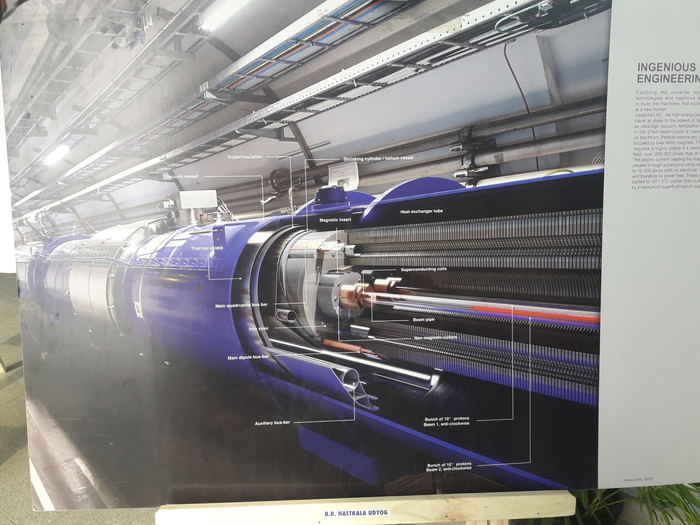Physics conclave
The Shiv Nadar School collaborated with scientists from European Organisation for Nuclear Research (CERN) and India for a Physics Conclave to help students understand the mysteries of the universe such as the Higgs Boson and the Big Bang.
On Monday, 19 November 2018, five students of class XI, namely Kartik, Jayesh, Sarthak, Saumya and Darsh were accompanied by their Physics teacher Ms. P. Yogeshwari attended a Physics conclave with the theme, The Mime of the Universe.
We reached the host school around 9:30 am where we were served breakfast. Thereafterwe moved to the auditorium. Here we were given an introduction by Dr. Archana Sharma, senior scientists in the department of Physics and the only permanent scientist at CERN the European Organisation for Nuclear Research.
Dr. Sharma is an internationally-recognised expert for her experimental work on gaseous detectors for research in High Energy Physics. Dr. Sharma began the session by telling us about her experience with CERN and about the LHC the Large Hadron Collider.
[gallery link="file" columns="2"]
The LHC is the worlds largest particle accelerator with a circumference of 27 km. It accelerates Lead ions to 99% of the speed of light. The fast travelling ions then collide with the LHC and it captures
every moment, literally. It takes 14 million photos every second!
There were two main drawbacks. The LHC requires a large amount of power, equivalent to 20 kiloamps - around 11,000 revolutions of a proton about the Earth. Also, there is no way to send the humongous amount of data to other agencies in the US, Russia, etc. To tackle the power problem, the LHC project was taken to Geneva, which was known to have no power supply errors at all. Tackling the second drawback led to the invention of the worlds most useful forum: the World Wide Web.
Accelerating the Lead ions is actually much easier. A perfect vacuum is created, which is more powerful than that on the moon. Then an electric current passing through a solenoid creates a magnetic field which does the main acceleration. When the ions collide, muons are released which are detected in the muon chambers.
After all the problems are taken care of, the boson was discovered in 2011 after a long time of constructing and experimenting. It was named the Higgs Boson, after Peter Higgs, who theorised of its existence.
After all this, we saw a panel discussion between several experts from different fields. The panelists discussed topics regarding science and education and its impact on society.
Another highlight of the conclave was the virtual interactive session with Albert De Roeck, senior scientist and convener of Higgs, an expert on Neutrino from CERN.
The Physics Conclave enlightened our minds and highlighted the scope for students in Physics and at CERN, as it expanded our horizons well beyond textbook science.
Darsh Kumar, XI-A













